A garden tiller is a great tool to have in your gardening arsenal, but it can be intimidating to use if you’ve never used one before. In this comprehensive guide, we will answer all of your questions about how to use a garden cultivator and provide helpful tips to make the process easier for you. So, whether you’re just starting out with gardening or are an experienced gardener looking for information on using a garden tiller, read on for everything you need to know!
Why Use a Tiller?
One of the most common questions we get asked about tillers is why they are necessary. After all, can’t you just dig up your garden with a shovel? While it is possible to do this, it is very time-consuming and difficult to do by hand. A garden tiller will make the job much easier and faster, allowing you to spend more time enjoying your garden. In addition, using a tiller will help to aerate the soil, which will improve drainage and allow your plants to better absorb nutrients.
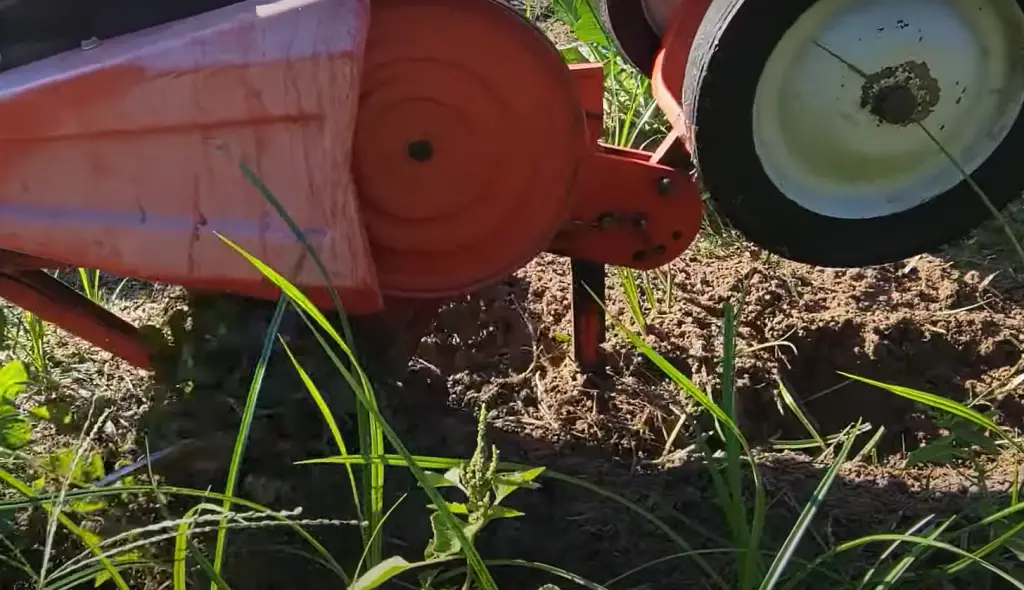
If you’re still on the fence about whether or not a tiller is right for you, consider renting one before making a purchase. This way, you can try it out and see if it’s something you think you would use on a regular basis.[5]
Types of Garden Tillers
There are three main types of garden tillers: rototillers, rear-tine tillers, and front-tine tillers. Each type has its own set of advantages and disadvantages that you should consider before making a purchase.
Rototillers are the most common type of tiller. They are easy to operate and can be used on all types of soil. Rototillers have blades that rotate in a circular motion, which makes them very effective at breaking up compacted soil.
Rear-tine tillers are less common than rototillers but they offer some advantages over their counterparts. Rear-tine tillers have blades that rotate in a back-and-forth motion, which makes them ideal for breaking up hard, compacted soil.
Front-tine tillers are the least common type of tiller. They are best suited for small gardens and light-duty work. Front-tine tillers have blades that rotate in a forward motion, making them less effective at breaking up compacted soil but they are easier to maneuver than rear-tine tillers.
Now that you know the different types of garden tillers, it’s time to choose the right one for your needs. Consider the size of your garden, the type of soil you have, and your budget when making your decision.[1]
Function of a Garden Tiller
A garden tiller is a tool that is used to loosen and aerate the soil in your garden. This is done by breaking up the soil with the blades of the tiller, which allows air and water to reach the roots of your plants more easily.
This makes it easier to pull them out by hand, or with a weed removal tool.
Garden tillers can be either manual or electric, although electric ones are much more common. Manual tillers can be difficult to use if you have a lot of ground to cover, as they require a lot of strength and stamina. Electric tillers are much easier to use, as they do all the work for you.
If you are considering buying a garden tiller, there are a few things you should keep in mind. Firstly, think about how big your garden is and how much ground you need to cover. If you have a small garden, a manual tiller might be sufficient. However, if you have a larger garden or one with tough soil, an electric tiller will make your life much easier.
Secondly, consider what kind of soil you have. If your soil is very sandy or clay-like, an electric tiller may not be powerful enough to break through it. In this case, you would need to buy a gas-powered tiller, which is much more expensive.
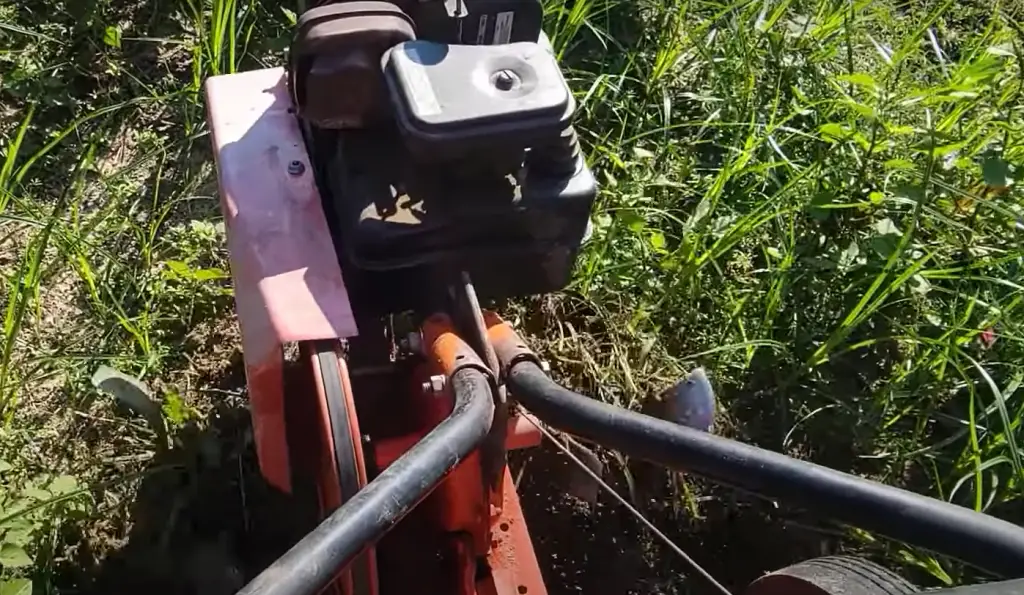
Thirdly, think about how often you will need to use the tiller. If you only need it for occasional use, then an electric tiller will be fine. However, if you plan on using it frequently, a gas-powered tiller will be a better investment.[1]
Once you have considered all of these factors, you can start shopping around for the perfect garden tiller for your needs. There are many different models and brands available, so take your time to find one that is right for you. With a little research, you will be able to find the perfect garden tiller to make your gardening life easier!
When to Use a Garden Tiller
The best time to use a garden tiller is when the ground is moist but not too wet or too dry. If the ground is too wet, the tiller will compact the soil and make it difficult for plant roots to penetrate. If the ground is too dry, the tiller may damage plant roots.
Another factor to consider is whether you need to till a large area or just a small patch. For large areas, it’s best to rent a garden tiller from a local hardware store or nursery. Smaller areas can be cultivated by hand with a hoe or spade.[1]
How Do I Operate a Garden Tiller?
The first thing you need to do is get familiar with the different parts of the tiller. The engine is the powerhouse of the machine, and it’s located at the rear. In front of that is a set of metal blades or tines that rotate rapidly. These are what do the actual work of breaking up soil and churning through debris.
With a push-type machine, you’ll stand behind it and use your body weight to drive it forward. Pull-type models have a handlebar that you grip with one hand while using the other hand to guide it along.
Most tillers have adjustable depth settings that let you control how deep the blades go into the ground. You’ll want to start with a shallow setting and increase it as needed.
Now that you know the basics, let’s look at some specific tips for using a garden tiller.[3]
Prepare the Soil
The first step is to break up the soil in your garden. You can do this with a spade or a hoe. For larger gardens, you may need to use a rototiller. Rototillers are large, mechanized machines that till the soil. They’re available for rent at most hardware stores.
If you have a small garden, you can till the soil by hand. Start by loosening the top layer of soil with a spade or hoe. Then use a rake to level the ground. Finally, use a tiller to loosen the subsoil.
Subsoil is the layer of soil beneath the topsoil. It’s dense and full of nutrients that plants need to grow. By loosening the subsoil, you’ll make it easier for roots to penetrate the soil and access these nutrients.
Tilling also aerates the soil, which is important for plant growth. Aerated soil has more oxygen, which plants need to produce food.
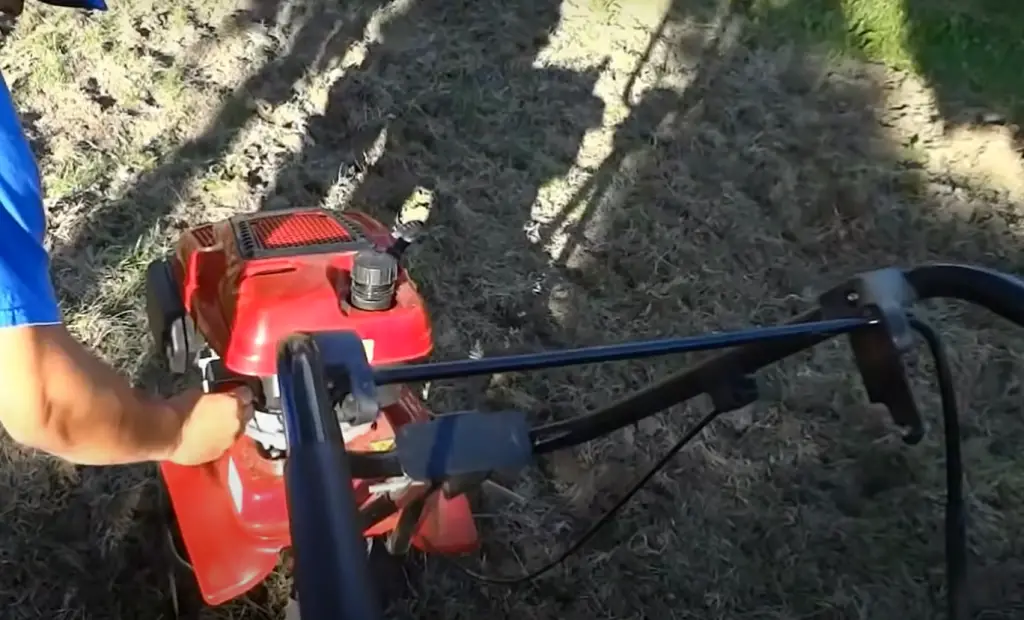
Tilling is hard work, but it’s essential for a healthy garden. So take your time and do it right. Your plants will thank you!
After you’ve loosened the soil, it’s time to add some amendments. Amendments are materials that improve the quality of the soil. They can be organic or inorganic.
Organic amendments include compost, manure, and leaf mold. These materials add nutrients and improve drainage. Inorganic amendments include sand and perlite. These materials improve drainage and aeration.
No matter what type of amendment you choose, make sure you add it to the soil before you plant anything. This will give your plants a head start and help them grow strong and healthy.[1]
Use the Garden Tiller Properly
If you want to know how to use a garden tiller, then you need to start with the basics. Make sure that you read the manufacturer’s instructions carefully before using the machine. Familiarize yourself with all of the parts and controls so that you can operate it safely and effectively.
Be sure to till your soil when it is dry so that the machine doesn’t get clogged up. Work in small sections so that you don’t overload the tiller. Go over each section multiple times so that all of the soil is turned over.
Rake up any debris that is left behind after you have finished using the tiller. This will help keep your garden tidy and free of obstacles.[1]
Rear-tine tilling techniques
If you’re using a rear-tine tiller, the process is a bit different. For one, you’ll be walking behind the machine as it does its work. And two, you’ll need to engage the tines before starting the engine.
To do this, simply pull on the rope or lever that’s located near the tines. Once they’re engaged, start up the engine and begin moving forward. The tines will dig into the soil and turn it over as you go.
When you’re finished, disengage the tines and shut off the engine. Then, use a rake to even out the ground before planting your seeds or transplants.
Rear-tine tillers are ideal for larger gardens or areas that haven’t been tilled before. But they can be a bit more difficult to maneuver than front-tine tillers. So, if you’re new to using this type of equipment, it’s best to practice in a small area first.[2]
Front-tine tilling techniques
Most front-tine tillers have four or five tines that rotate in a forward direction as you push the machine forward. The tines are set in a horizontal position and are turned by a belt or chain connected to the engine.
If you’re using a front-tine tiller for the first time, it’s important to get a feel for how the machine works before you start tilling your garden. Here are some helpful tips:
- Start by tillering an area that’s already been cleared of debris. This will help you get a feel for how the machine handles.
- Be sure to keep the tines level with the ground as you till. If they’re not, they can cause uneven soil depth and compaction.
- Don’t try to till too deeply at first. Start with shallower depths and work your way down.
- Be sure to overlap your passes as you till so that you don’t miss any spots.
- Keep an eye on the condition of the tines as you use them. If they start to look worn, they may need to be sharpened or replaced.
With these tips in mind, you’ll be well on your way to using your front-tine tiller like a pro![2]
Tilling Depth Tips
The depth you till depend on several factors.
For example, if you’re starting a new garden, you’ll need to till deeper than if you’re just preparing an existing bed for planting.
In general, a good rule of thumb is to Till to a depth of about one-third the width of your tiller’s blade.
This will ensure that the tines can loosen the soil without hitting any large rocks or roots that might be lurking just below the surface.
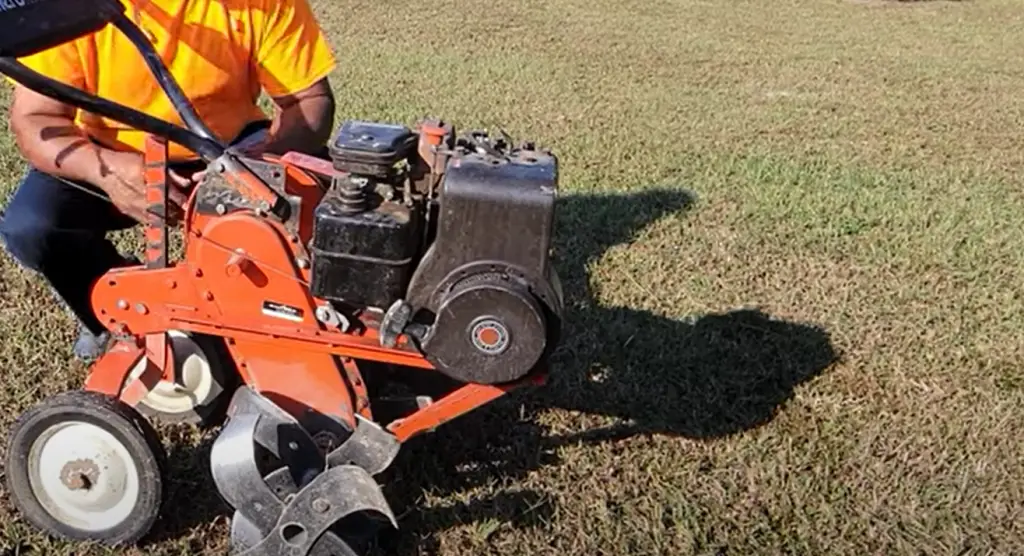
Another factor to consider is the type of soil you’re working with.
Sandy soils require less tilling than clay soils because they are easier to break up and aerate.
If you’re not sure what type of soil you have, a good way to find out is to take a handful of moistened soil and try to form it into a ball.
If the ball crumbles easily, you have sandy soil. If it takes some effort to break the ball apart, you have clay soil.
One last tip for tilling depth is to be sure not to go too deep.
Tilling too deeply can actually damage your tiller’s blades and make it harder for the machine to do its job properly.
It can also kill any existing grass or other vegetation in your garden bed, so be careful not to overdo it![5]
Tips for Garden Tiller Parts
If you’re new to using a garden tiller, there are some things you should know about the different parts and how to maintain it. Here are some tips:
- The most important part of the garden tiller is the blade. It’s what does all the work, so make sure it’s sharp and in good condition.
- The next most important part is the handle. It needs to be comfortable for you to grip and hold onto while you’re using the tiller.
- The engine is another important part. Make sure you read the manufacturer’s instructions on how to start and operate it safely.
- Always wear protective gear when using a garden tiller, such as gloves, goggles, and earplugs.
When you’re finished using the tiller, clean it off and store it in a dry, safe place.[5]
Take Proper Safety Precautions
Before you start operating a garden tiller, it’s important to take proper safety precautions. Wear protective clothing, such as gloves, long pants, and closed-toe shoes. In addition, be sure to read the operator’s manual before using the machine. Familiarize yourself with the controls and make sure you understand how to use them properly.
Cultivators vs Tillers
There’s often confusion between cultivators and tillers. They are similar but have some key differences. Cultivators are smaller and more lightweight, making them better suited for small jobs or spaces. Tillers on the other hand are larger and heavier duty, making them ideal for breaking up tough soil or preparing a new garden bed.

If you’re not sure which one is right for your needs, it’s best to consult with a gardening expert or the staff at your local nursery. With their help, you can choose the right tool for the job and get started on creating your dream garden![2]
Can you remove the grass with a tiller?
Yes, you can use a tiller to remove grass from your garden. However, it is important to note that doing so may damage the blades of the tiller. If you do choose to use a tiller to remove grass, be sure to carefully read the manufacturer’s instructions first and take extra care when operating the machine.
Another option for removing grass from your garden is to use a sod cutter. Sod cutters are specially designed for this purpose and will not damage the blades of your tiller.[4]
How to use a tiller to remove grass?
Clean the area first
Be sure to remove all rocks, sticks, and debris from the area where you’ll be tilling. You don’t want anything damaging your tiller’s blades![1]
Make the land semi-dry
Next, use a garden hoe or spade to loosen the soil in the area where you’ll be working. Loosen the soil to a depth of about eight inches. Once you’ve loosened the soil, it’s time to start tilling![4]
Prepare the tiller
Set the tiller on a flat, level surface. If you’re using an electric tiller, plug it in and turn it on. If you’re using a gas-powered tiller, fill the tank with gasoline and check the oil level.
Engage the clutch if your tiller has one. This will prevent the blades from spinning when you’re not using them.
Start at one end of the area you want to till and work your way across. Overlap each pass by about six inches to ensure that all of the soil is turned over.
Put on protective equipment
Before you start operating the tiller, it is important to put on the proper safety gear. This includes gloves, long pants, closed-toe shoes, and ear protection. You should also wear eye protection, such as goggles or glasses.
Dig the tiller blades to the bottom of the grass
This will loosen the grass and make it easier to pull out. For best results, use a garden spade or trowel to dig around the edges of the tiller blades to loosen the soil.
If you are having difficulty removing the grass, try using a garden hoe to help dig up the roots. Be sure to wear gloves when handling a hoe, as the sharp blades can cut your hands.
Once you have loosened the soil, carefully remove the tiller blades from the ground and shake off any loose dirt. Wipe down the blades with a clean cloth before storing them in a safe place.[4]
Keep it on a pattern
When you are tilling a garden, it is important to keep your machine on a consistent pattern. This means that you should not overlap your rows and that you should make sure that each row is the same depth. By following these simple guidelines, you will be able to create a garden that looks professional and tidy.
This will ensure that your rows are straight and even.
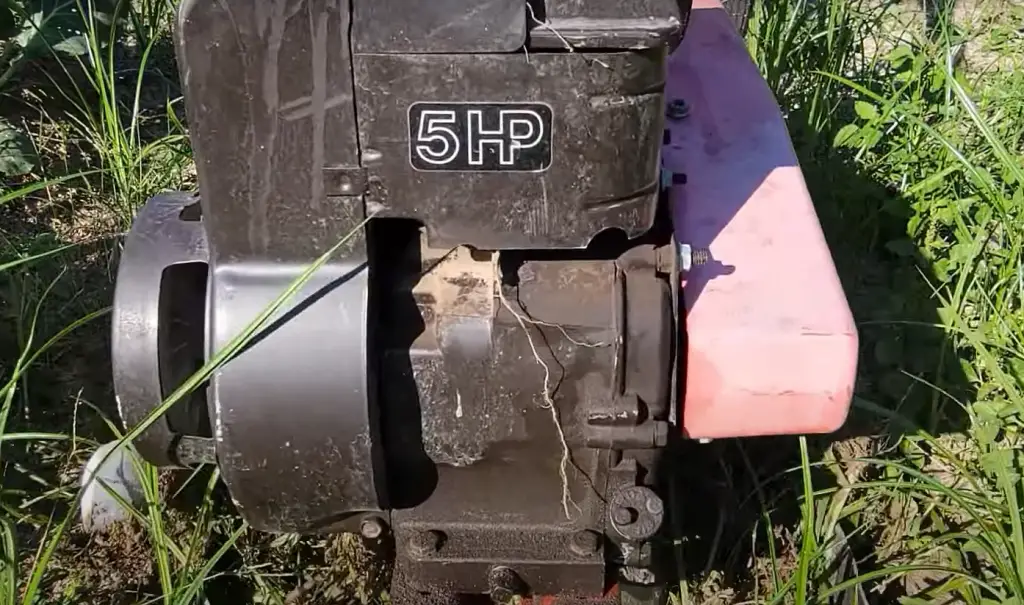
Finally, when you have finished tilling your entire garden, take a step back and admire your work! You have now created a beautiful space that is ready for planting. Congratulations!
FAQ
Should I use a tiller before planting grass?
Yes, it is recommended that you use a tiller before planting grass. This will help to loosen the soil and make it easier for the grass roots to take hold.How deep should I till my garden?The depth of your tilling will depend on what you are trying to achieve. If you are just looking to loosen the top layer of soil, then a shallow depth will suffice. However, if you are looking to aerate the soil or break up compacted earth, then you will need to go deeper. Generally speaking, most tillers can handle depths of up to six inches.
Can you use a tiller in the rain?
If you’re planning on tilling your garden in the rain, it’s important to know that most tillers cannot be used in wet conditions. This is because the tillers are designed to work best in dry soil conditions. Wet soil can cause the tiller to clog and can also make it difficult for the tiller to move through the soil. If you must use a tiller in wet conditions, it’s important to choose one that is specifically designed for wet weather use.Another thing to keep in mind when using a tiller in the rain is that you’ll need to be extra careful not to damage the plant roots. Wet soil can make it easy for the tines of the tiller to damage delicate roots.
Can you plant immediately after tilling?
It is best to wait a few days after tilling before planting. This will give the soil a chance to settle and for any rocks or debris to be removed. You should also check the pH level of the soil before planting. You can use a garden tiller to remove grass from an area of your yard. First, mark out the area that you want to remove the grass from. Then, use the tiller to loosen up the soil in that area. Next, use a shovel or spade to remove the grass roots. Finally, fill in the area with new topsoil and seed it with new grass seed.
How to use a tiller on hard ground?
Using a tiller on hard ground may require some preparation beforehand. The soil should be loosened using a shovel to break up clusters of dirt, and any rocks or weeds in the area should also be removed. After this is done, you can use your tiller to break up the soil even further. You’ll need to adjust the tines as necessary for working with different types of soil. Additionally, it’s important to work slowly and carefully so that you don’t get stuck or cause any damage to your tool. Finally, when you are finished with your work, it’s best to rake over the area afterward so that everything looks evened out and smooth.
How to use a manual garden tiller?
Manual garden tillers are a great way to quickly break up and loosen soil for gardening. They can also be used to dig trenches and furrows, as well as mix in compost or other organic matter into the soil. Here’s how to use one:
- Assemble your tiller according to the manufacturer’s instructions. Make sure all parts are firmly attached before starting.
- Set the depth of your tiller by adjusting the handles so that it is digging no more than 2-3 inches deep into the soil. This will help prevent damaging any underground roots or bulbs.
- Start with larger chunks of soil first – use your shovel or rake to break them up if needed. Then, start tilling in small overlapping circles so that the soil is evenly broken up.
- Go over any areas where you can feel a lot of resistance or large chunks especially well, as these may need to be manually broken down with your shovel before continuing to till them.
- When all of the soil has been lightly tilled, use your rake or hoe to level it out and mix in any organic material such as compost or manure as needed.
- Finally, check for rocks and stones that may have been unearthed during the process – remove and discard them as necessary.
How to use a hand garden tiller?
Using a hand garden tiller is an important skill for any gardener. It can help make quick work of tough soil and allow you to add valuable compost and nutrients to the soil quickly. Here are some tips on how to use your hand garden tiller for maximum efficiency:
- Prepare the soil: Before using a hand garden tiller, it’s important to loosen up the existing soil in your garden bed. Use a shovel or spading fork to break up clumps of dirt and remove debris from the area before starting. This will ensure that your tiller can effectively penetrate deeper into the soil without getting stuck.
- Set up your tiller: Place your hand garden tiller in front of the area you want to till, making sure that the tines of the tiller will reach into the soil. Make sure to keep your feet firmly on the ground and your body centered over the tiller for maximum leverage.
- Start tilling: Gently press down on the handle of your tiller and start turning it in a circular motion as you walk forward across your garden bed, allowing the tines to penetrate into the soil beneath you. This will help break up any clumps of dirt while mixing compost, fertilizer or amendments into your existing soil.
- Repeat as necessary: Continue tillering until you have covered all areas where you would like to work in compost or add nutrients to the soil. Be sure to take your time and not try to till too deep in any one area.
- Clean up: Once you have finished tilling, be sure to remove any debris from the affected areas and rake the soil into a nice even layer.
How to use a tiller to remove weeds?
Using a tiller is a great way to remove weeds from your garden. To start, prepare the area by hoeing and removing existing weeds before running over the area with the tiller. You’ll want to work in small sections and always go at a slow speed when using the tiller. Then, adjust the depth of your tines so that it cuts out as much of the root system as possible for effective weed removal. Finally, make sure to rake up any leftover debris and dispose of it properly before refilling any holes or adding new soil if desired. Taking these steps will ensure that you successfully use your tiller to remove all unwanted weeds from your garden.
How to use a Craftsman tiller?
Using a Craftsman tiller requires the proper preparation of the soil. First, remove any large rocks or debris that may be in the area where you will be using your tiller. Make sure to wear gloves and protective goggles for safety.
Next, attach the Craftsman tiller to its power source such as an electric cord or gasoline engine. Turn on the power source, hold down both handlebars firmly and slowly pull back on the throttle until you feel some resistance from the engine. To engage the tines, press down on the forward lever located on one of the handlebars. Once engaged, begin to move forward with consistent speed stabilizing your movements with even pressure on both handles.
If you encounter a large root or rock, slowly move the tines over it and the tiller should power through. Move slowly and steadily for approximately five feet before turning around to avoid any tiring of your arms or wrists. Continue this pattern until you have covered the area desired.
When finished, turn off the power source, disengage the forward lever and begin cleaning up your work area. Use a hand rake to remove any clippings or soil that may be left behind and store your Craftsman tiller in a safe place when not in use. With proper maintenance, these steps will help ensure your Craftsman tiller continues to work effectively for years to come.
Does the ground have to be dry to use a tiller?
It is important to remember that tilling wet soil can cause compaction and clumping. If the ground is too wet, it should be allowed to dry before use in order to ensure optimal results. However, if the soil is just slightly damp, you may find that tilling it produces better results than dry soil. It all depends on the condition of the ground when you start. When in doubt, allow additional time for the ground to dry before using a garden tiller. Additionally, if the soil has an overly hard surface layer, gently watering it prior to running your tiller may produce better results as well.
Once you’ve determined whether or not your soil needs more time drying out before use, there are a few other factors to consider. When tilling, it’s important to be sure that you don’t dig too deep. If the tines of your rototiller go too far into the ground, they can cause soil compaction and damage roots below the surface. Generally, a good rule of thumb is no more than 8 inches deep for any single pass with a garden tiller. Additionally, make sure your tiller is properly adjusted prior to use. You should set the depth adjustment knob just high enough above the ground so that you can see it when looking down at the top of your soil bed. This will ensure proper results without damaging underground fixtures or causing compacting issues. Finally, when setting up your garden area for tilling, be sure to rake the area thoroughly and break up any large chunks of clumped soil. Doing this prior to tilling will ensure your tiller is able to churn through the ground easily and evenly.
How do you prepare soil for a tiller?
Before using a garden tiller, the soil needs to be prepared. Start by clearing away any rocks, roots, or weeds from the area where you will be tilling. Then rake over the surface of the soil to break up large clumps and remove large debris. This will make it easier for the tiller to penetrate and turn over the soil. Once this is done, use a spade or shovel to create furrows in which you can run your tiller. Make sure that you are creating furrows in even widths so that they will be easier to work with as you till them. Finally, moisten the soil slightly before starting your tilling task. This will help ensure that your results are even and consistent throughout all of your tiled areas.
How deep should you till a garden?
When using a garden tiller, you should till your soil to a depth of 6-8 inches. This will ensure that your roots are able to reach into the soil and get the nutrients they need for healthy growth. You may want to go deeper if you have heavy clay or hard packed soils, but in general, 6-8 inches is sufficient for most gardens. Be sure to go slowly when tilling at this depth and to stop when you begin to see large rocks or tree roots in the soil. These can damage your tiller blades if not removed first.
Another important factor when it comes to tilling is how wet the soil is before you start. If the soil is too wet, it can stick together, creating large clumps that are difficult for a tiller to break up. On the other hand, if the soil is too dry, it can become powdery and harden when it comes into contact with the blades. For best results, your soil should be slightly damp but not overly wet or dry before tiling.
Finally, make sure to be mindful of where you are tilling in your garden. Large areas of compaction—such as walking paths or previous plantings—will require less depth of tillage than an area that has never been worked before. This will help prevent damaging existing roots by over-tilling and allow your plants to get the nutrients they need without disruption from too deep of a cultivation.
How many times should you till your garden?
The frequency of tilling your garden depends on the condition and size of your soil. If you have sandy, gravelly or loamy soil, then you can get away with tilling just once a year. With clay soils, however, it is necessary to till more frequently – around two to three times per growing season. This will help keep the soil loose and prevent compaction from occurring. When tilling in subsequent years, make sure not to dig too deeply as this could damage root systems or disrupt naturally occurring beneficial microbes. It’s also important to remember that areas that are already densely planted should be left alone – no tilling needed! In most cases, using a shallow cultivation tool such as a hoe or rake should suffice for these areas.
When tilling, it’s best to work slowly and methodically so that you don’t disrupt the soil structure too much. Work in small sections at a time, breaking up clumps of dirt as you go along. If you notice any large rocks or roots sticking out of the ground, remove them before continuing with your tilling process. Once you’re finished with a section, move onto the next until your entire garden is done.
Useful Video: How To Use A Tiller (FULL Tutorial)
Conclusion
Hopefully, this article has helped answer some of your questions about how to use a garden tiller. As you can see, it’s a fairly simple process that can save you a lot of time and energy in the long run. Just be sure to follow the manufacturer’s instructions carefully and always wear protective gear when operating the machine.
If you have any other tips or advice on using garden tillers, feel free to share them in the comments section below. Happy gardening!
References:
- https://www.bigrentz.com/how-to-guides/how-use-garden-tiller
- https://www.doitbest.com/resources/articles-and-buying-guides/how-tos/how-to-use-a-garden-tiller
- https://www.troybilt.com/en_US/knowledge-tb-garden-tiller-operation-tips.html
- https://edenapp.com/blog/how-to-use-a-tiller-to-remove-grass/
- https://blog.gardeningknowhow.com/trends/tilling-gardens-different-ways-to-use-tillers-in-the-landscape/





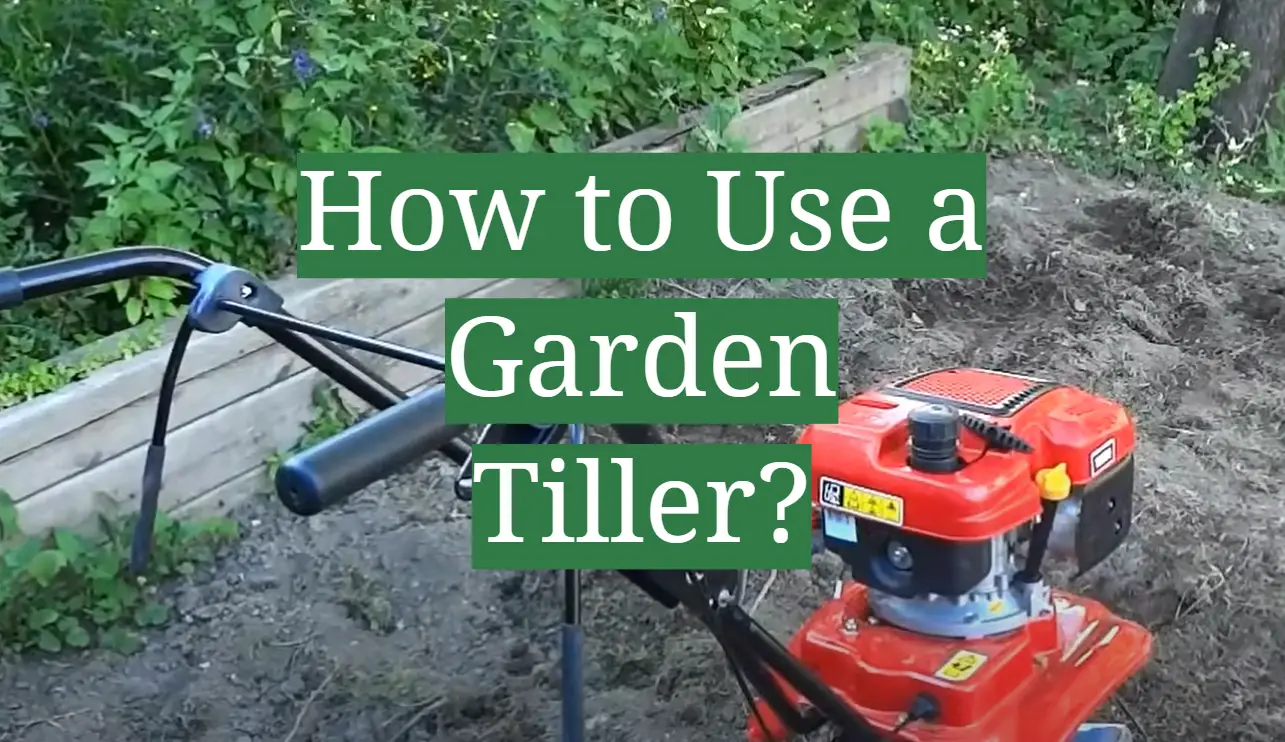




Leave a Reply
View Comments